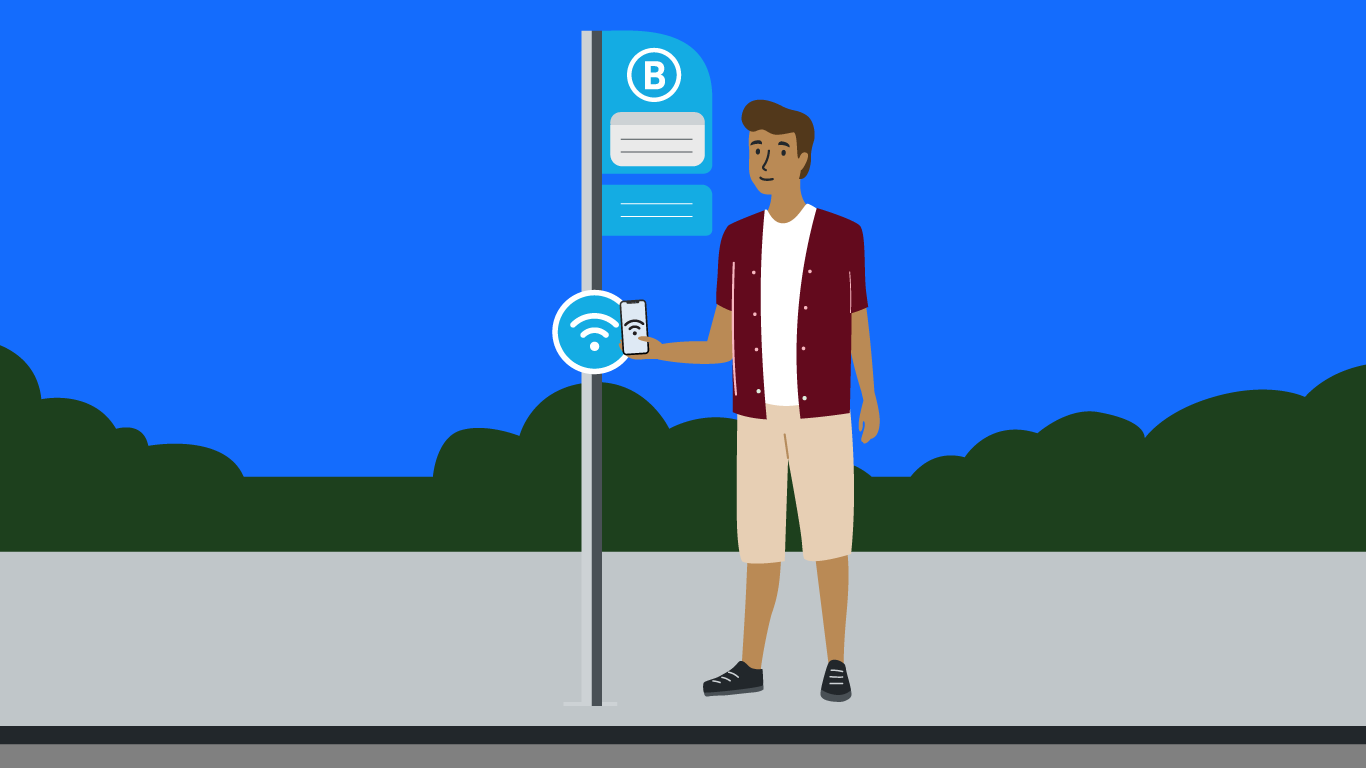Using NFC Technology
NFC technology can transform how passengers access transport updates, offering a simple, tap-and-go experience.

Transport for NSW is inviting innovators to trial context aware solutions that use data, design, and analytics to provide public transport passengers with personalised, real-time information, during unplanned disruptions. Successful ideas receive up to $50,000 in funding and the opportunity to collaborate with experts and test their ideas in a real-world setting. Read on to discover more about context aware solutions and find inspiration for your challenge submission.
Using NFC Technology
As public transport systems evolve, there’s a growing need for smarter ways to help passengers stay informed, especially when disruptions or unexpected changes occur. Near Field Communication (NFC) technology is proving to be a powerful tool for delivering context aware solutions that provide personalised, real-time information to passengers at stations, stops, or onboard.
NFC technology can transform how passengers access transport updates, offering a simple, tap-and-go experience. Whether someone is a tourist unfamiliar with the system or an infrequent user without a transport app, NFC ensures everyone gets the information they need at the moment they need it.
Simple, Real-Time Updates for All Passengers
One of NFC’s greatest strengths is its ability to provide immediate updates without requiring passengers to download or open an app. By simply tapping their phone against an NFC-enabled surface at a bus stop, station, or onboard a vehicle, passengers can instantly access real-time travel information.
For example, a tourist could tap an NFC tag at a bus stop and instantly see when the next bus will arrive, if there are any delays, or what alternative routes are available. All of this happens in an instant, without the need for an app or prior knowledge of the transport network. This makes NFC particularly valuable for infrequent travellers or visitors who may not have the latest transport apps on their phones.
Context Aware by Design
What makes NFC so powerful for context aware solutions is its ability to deliver location-specific information. The updates passengers receive are tailored to their exact location—whether it’s a specific bus stop, train station, or the vehicle they’re travelling on.
For instance, tapping an NFC tag at a particular station would provide updates about the next train, possible disruptions, and alternative routes relevant to that specific station. Similarly, tapping an NFC tag onboard a bus could provide information about upcoming stops, connection options, or any service changes along the route. This narrowcast approach—providing the right information to the right person at the right time—is at the heart of what context aware solutions aim to achieve.
Solving Disruptions with NFC
NFC technology also plays a key role in helping passengers navigate unexpected disruptions. Whether it’s a weather-related delay, a last-minute route change, or an issue with station accessibility, NFC tags can instantly inform passengers of these changes and suggest alternatives.
For instance, if a lift at a station is out of service, a passenger with accessibility needs could tap an NFC tag and be immediately notified of alternative routes or nearby stations with working lifts. This level of real-time, personalised communication can dramatically improve the passenger experience, especially for those with specific needs.
Inspire Your Solution
NFC technology offers a wealth of possibilities for creating innovative, context aware solutions in public transport. It’s a simple yet powerful way to give passengers the personalised, real-time information they need to navigate their journeys smoothly.
If you’re inspired by how NFC can enhance public transport, the Context Aware Travel Innovation Challenge is the perfect opportunity to bring your ideas to life. With up to $50,000 in funding available, now is your chance to submit a solution that helps passengers stay informed, especially during unplanned disruptions.
Disclaimer: The views and opinions expressed in this blog are presented solely for the purpose of fostering innovation, sparking discussion, and inspiring potential solutions. They do not represent the official stance, policies, or endorsements of the organisation.